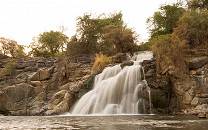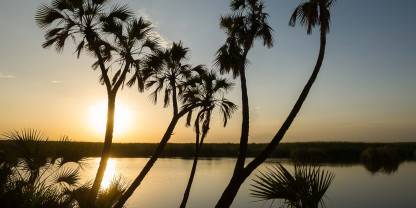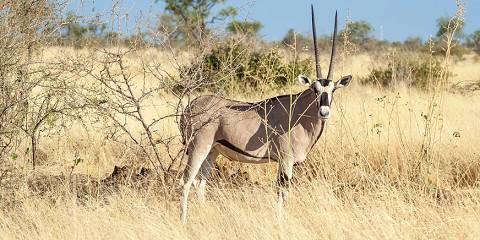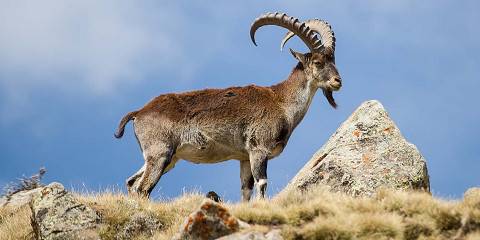Awash National Park in the Rift Valley features several impressive landmarks worth exploring. Awash Falls tumbles down into the scenic gorge of the same name. The palm-fringed Filwoha Hot Springs are a refreshing oasis for people and animals alike. And the hot, dusty plains are towered over by the dormant volcano Mt Fentale.

-
Best Time To Go
- October to February (Little rain and less hot)
-
High Season
- September to April (The park is never busy)
-
Size
- 756km² / 292mi²
-
Altitude
-
758-1,864m /2,487-6,115ft
 View Photos
View Photos
 View Photos
+24
Photos
View Photos
+24
Photos
Pros & Cons
- Dry-country wildlife
- Great birding
- Very accessible en route from Addis Ababa to Harar
- Scenic highlights
- Mt Fentale climb available
- Low wildlife densities
- Human encroachment
Wildlife
Awash NP was established to protect the dry-country wildlife of the area including Beisa oryx, Salt's dik-dik and Soemmerring’s gazelle. Olive baboon are common, but more interesting are the localized white-maned hamadryas baboon. Spend an afternoon at the hot springs and you might see them drinking before heading to the cliffs to groom and settle for the night.
More about Awash’s wildlifeScenery
The park is characterized by open grassland with pockets of acacia scrub. The dusty plains are interrupted by the Awash River, which plunges down several waterfalls before carving through a deep gorge. The clear pools of the Filwoha Hot Springs, surrounded by doum palm trees, attract animals looking for water and shade. Mt Fentale towers over the landscape, and 200-year-old lava flows give testament to its last activity.
Weather & Climate
The weather in Awash NP is generally hot and dry. There is a short Wet season from July to September. Temperatures are quite consistent throughout the year. Days are hot at about 32°C/90°F, but peak temperatures can be much higher. Nights cool down to an average of 18°C/64°F.
More about the weather and climateBest Time To Visit
The best time to visit Awash NP is from October to February when it is dry and temperatures are a bit cooler. March to June is also a good time to visit but July and August can be a bit wet and July can be scorching hot. However, May to August is the low season and you might just have the place to yourself, and slightly lower rates will apply.
More about the best time to visit



